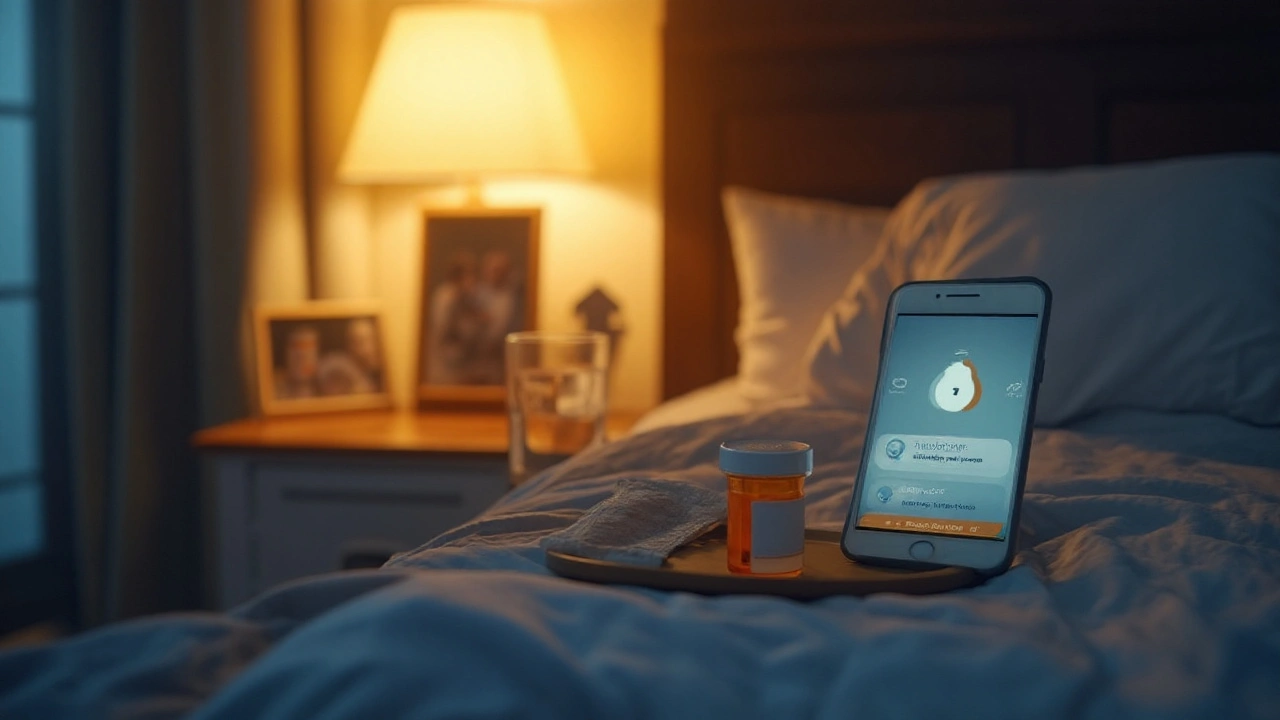Urinary tract spasms are involuntary, painful contractions of the bladder or urethra that create a sudden, urgent need to urinate. They often arise from irritation caused by infection, stones, or over‑active pelvic floor muscles. While the episodes are brief, the discomfort can be severe and may disrupt daily life.
What Triggers a Spasm?
Understanding the common culprits helps you anticipate and prevent episodes. Typical triggers include:
- Dehydration: Concentrated urine irritates the bladder lining.
- Caffeine and alcohol: Both act as diuretics and bladder stimulants.
- Stress and anxiety: Heightened nervous‑system activity can cause pelvic floor tension.
- Urinary tract infection (UTI): Bacteria produce chemicals that inflame the tract.
- Kidney stones or bladder stones: Physical obstruction leads to spasmodic contractions.
Keeping a simple diary of food, drink, and stress levels often reveals personal patterns.
Spotting the Warning Signs
Typical symptoms are a sharp, cramping pain in the lower abdomen, a sudden urge to void, and sometimes a faint burning sensation. In some cases, hematuria (blood in urine) or fever accompanies the spasm, signaling a more serious infection that warrants urgent medical attention.
When to Call a Healthcare Provider
Not every spasm needs a doctor's visit, but watch for these red flags:
- Fever above 38°C (100.4°F) or chills.
- Persistent pain lasting longer than 30 minutes.
- Blood in urine or cloudy, foul‑smelling urine.
- Inability to pass urine despite a strong urge.
- Recent trauma to the pelvis or back.
Prompt evaluation can prevent complications like kidney infection or chronic bladder dysfunction.
Immediate Comfort Measures
While you arrange professional care, these steps can ease the discomfort:
- Hydration: Encourage sipping warm water (150‑200ml) every 15minutes. Warm fluids relax smooth muscle and dilute irritants.
- Apply a warm compress (heat therapy) to the lower abdomen for 10‑15minutes. Heat increases blood flow and reduces spasm intensity.
- Practice deep‑breathing or guided meditation for 5minutes to lower sympathetic nervous system activity.
- Guide the person to a calm, private space where they can try to empty the bladder slowly, using a relaxed pelvic floor technique (gentle pushing without holding breath).
- If pain persists, an over‑the‑counter analgesic such as ibuprofen (200‑400mg) can be taken, provided there are no contraindications.
Medical Options: Antispasmodic Medications
When lifestyle tweaks aren’t enough, doctors often prescribe antispasmodics to calm the bladder muscles. Below is a quick comparison of the three most common agents.
| Medication | Typical Dose | Onset of Relief | Common Side‑effects |
|---|---|---|---|
| Oxybutynin | 5mg twice daily | 30‑60minutes | Dry mouth, constipation, blurred vision |
| Tolterodine | 2mg once daily | 45‑90minutes | Dry mouth, headache, dizziness |
| Hyoscine (Scopolamine) | 0.3mg three times daily | 15‑30minutes | Blurred vision, drowsiness, urinary retention |
These drugs work by blocking muscarinic receptors in the bladder wall, thereby reducing involuntary contractions. Your loved one’s doctor will choose based on age, other medications, and side‑effect tolerance.

The Caregiver’s Role
Being a supportive presence goes beyond handing over a glass of water. A caregiver should:
- Monitor symptom patterns and log them for the doctor.
- Assist with fluid intake, ensuring the person doesn’t over‑hydrate (which can trigger more frequent urges).
- Provide emotional reassurance; anxiety can worsen spasms, so a calm tone and patience are vital.
- Help with gentle pelvic floor exercises, ideally under a physiotherapist’s guidance.
- Coordinate appointments, medication refills, and any required laboratory tests such as urinalysis.
Think of yourself as the liaison between the patient’s body signals and the medical team’s interventions.
Lifestyle Adjustments That Make a Difference
Long‑term strategies reduce the frequency and severity of spasms:
- Dietary tweaks: Limit spicy foods, citrus, and artificial sweeteners; increase intake of magnesium‑rich foods (leafy greens, nuts) which help muscle relaxation.
- Bladder training: Encourage scheduled bathroom trips every 2‑3hours, gradually extending intervals.
- Pelvic floor therapy: A qualified physiotherapist can teach the pelvic floor muscle relaxation technique-often called “reverse Kegel” - to reduce involuntary contractions.
- Avoid irritants: Cut back on caffeine (no more than 200mg/day) and alcohol, both of which stimulate the detrusor muscle.
- Regular movement: Light walking improves circulation and helps the bladder empty completely.
Creating a Personalized Support Plan
Use this checklist to build a routine that fits the individual’s lifestyle and medical needs:
- Identify personal triggers by keeping a 7‑day symptom diary.
- Set up a hydration schedule - 1.5‑2L of water spread across waking hours.
- Arrange a quick‑access kit: warm compress, analgesic, and a list of emergency contacts.
- Schedule a physiotherapy session for pelvic floor assessment.
- Plan regular check‑ins with the primary care physician to review medication efficacy and side‑effects.
Review and adjust the plan monthly; many people notice improvement within 2‑4weeks of consistent effort.
Related Topics You Might Explore
While this guide focuses on urinary tract spasms, several adjacent areas often intersect:
- Urinary catheters: When a blockage prevents emptying, short‑term catheterisation may be needed.
- Kidney stone management: Stones can cause spasms; imaging and dietary prevention are key.
- Mental health impacts: Chronic pain can lead to anxiety or depression; consider counseling if mood changes appear.
- Diagnostic testing: Urinalysis, ultrasound, and cystoscopy help pinpoint underlying causes.
Each of these topics deepens the overall understanding of urinary health and offers additional avenues for support.
Frequently Asked Questions
What exactly causes urinary tract spasms?
Spasms occur when the bladder’s detrusor muscle contracts involuntarily. Common causes are irritation from a urinary tract infection, presence of stones, over‑active pelvic floor muscles, or exposure to irritants like caffeine. Inflammation and nerve hypersensitivity amplify the muscle’s response, leading to sudden, painful urges.
How much water should a person with spasms drink each day?
Aim for 1.5‑2litres spread evenly over waking hours. Small, frequent sips keep urine dilute without overwhelming the bladder. Adjust up if the person sweats heavily or lives in a hot climate, but avoid gulping large volumes at once, which can provoke a spasm.
Are antispasmodic drugs safe for older adults?
They can be safe, but dosage often needs adjusting. Older adults are more prone to dry mouth, constipation, and dizziness, which can increase fall risk. A physician will start with the lowest effective dose and monitor for side‑effects, sometimes opting for a drug with a milder side‑effect profile like tolterodine.
Can pelvic floor exercises worsen spasms?
If performed incorrectly, they can increase tension and trigger more spasms. The key is to learn the "reverse Kegel" - a gentle relaxation of the pelvic floor - under professional supervision. Regular, guided sessions usually lead to improved muscle control and fewer episodes.
When should I consider emergency care?
Seek emergency care if the person develops a high fever, experiences blood in the urine, cannot pass urine at all, or feels severe pain lasting more than half an hour. These signs may indicate a progressing infection or obstruction that needs urgent treatment.
Is urinary tract spasms support something I can provide at home?
Absolutely. By managing fluids, using heat therapy, monitoring symptoms, assisting with prescribed antispasmodics, and offering emotional calm, a caregiver can dramatically reduce the frequency and severity of episodes. A structured support plan empowers both the patient and the caregiver.




